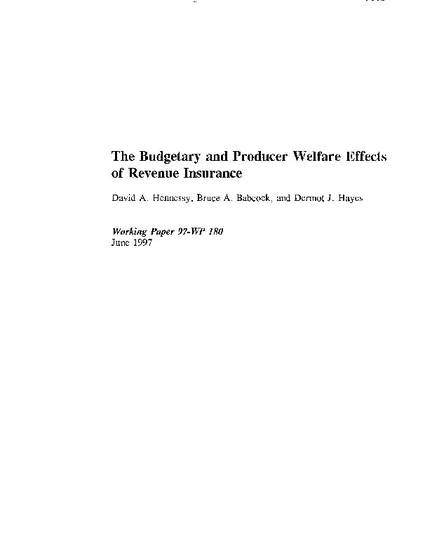
Legislation passed in 1996 changed the way the U.S. federal government acts to reduce risks faced by U.S. crop products. The authors compare the new, alternative forms of revenue insurance to the 1990 deficiency payment program and to a ''no-program'' alternative. They estimate the effects of the alternative polices on the acreage allocations of a representative farm, on the expected government cost, and on producer welfare. Simulation results indicate that a revenue insurance scheme that guarantees 75 percent of expected revenue to risk-averse produced could provide approximately the same level of benefits as the 1990 program, at as little as one-fourth the cost.
This working paper was published as Hennessy, David A., Bruce A. Babcock and Dermot J. Hayes, "Budgetary and Producer Welfare Effects of Revenue Insurance," American Journal of Agricultural Economics 79 (1997): 1024–1034, doi:10.2307/1244441.
Available at: http://works.bepress.com/dermot_hayes/40/
